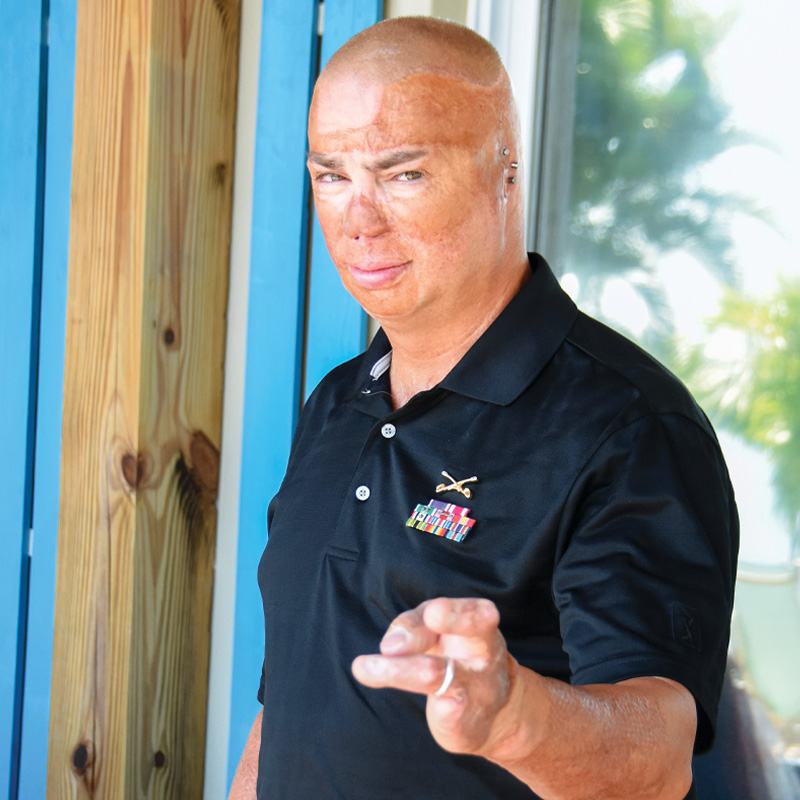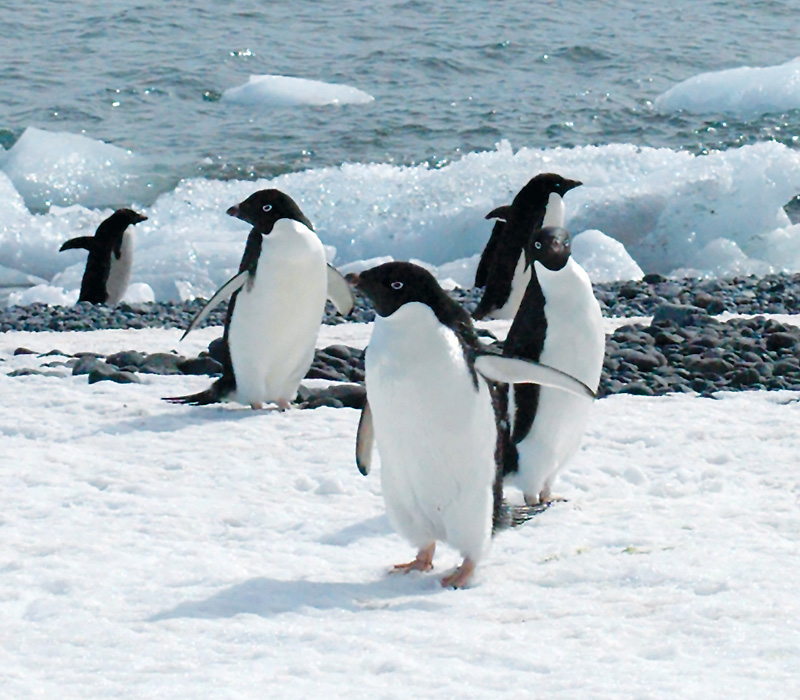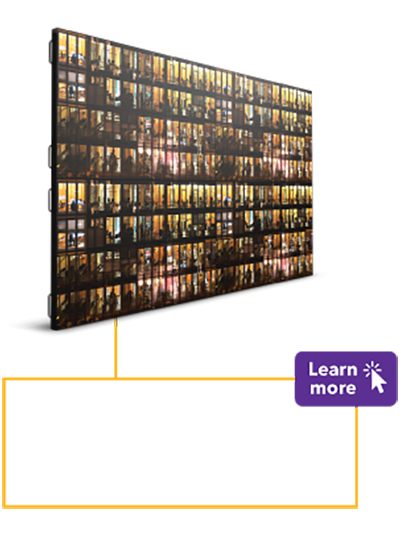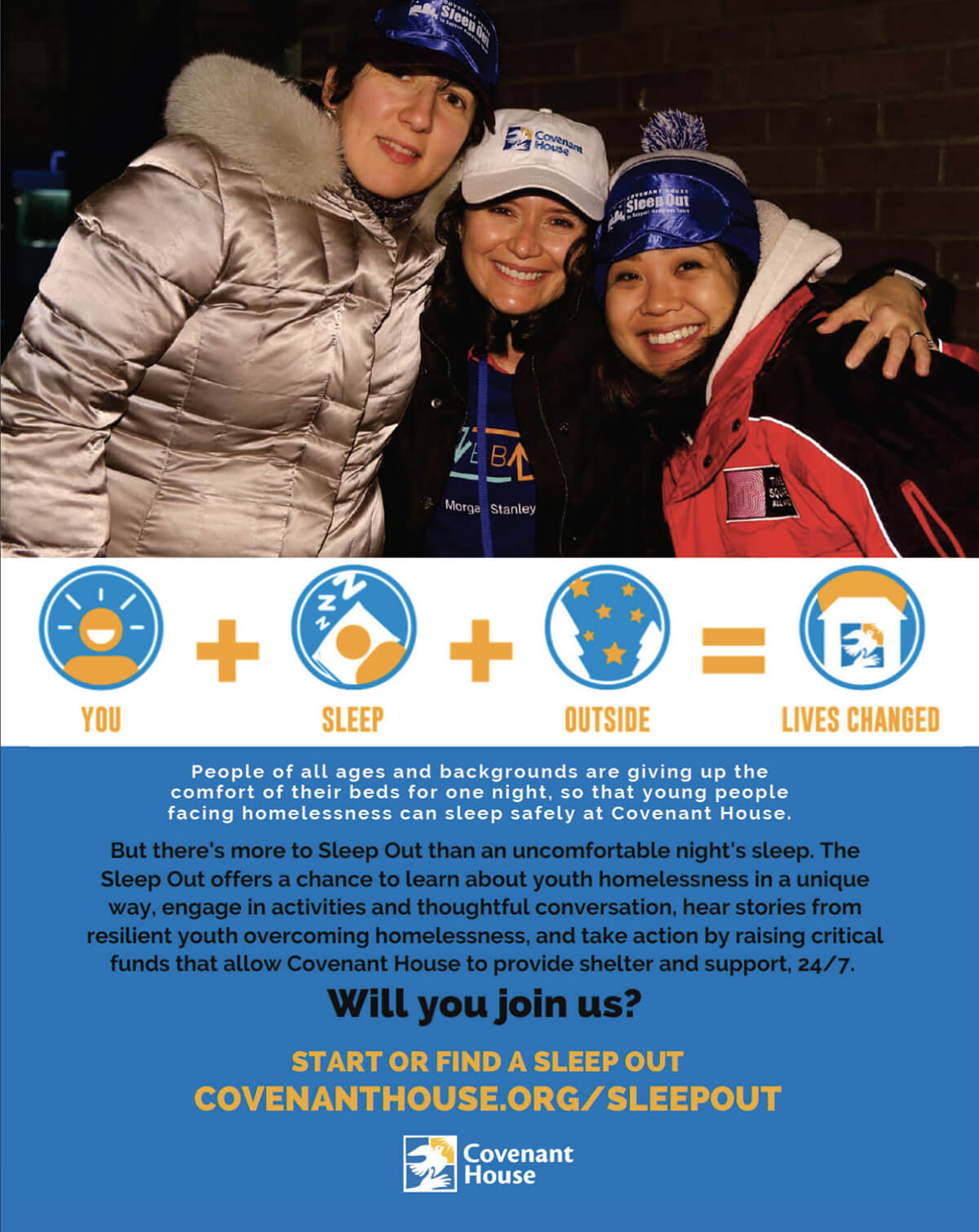
Jul-Sept 2020
We are excited to announce our new partnership with The Chariot Group who was just awarded the State of Utah cooperative contract for Online Marketplace.



The pandemic has been catastrophic. It has impacted or suspended virtually every aspect of daily life and massively disrupted the economy. But this head-on collision with a virus has had another effect. It has catapulted us into the future by accelerating our embrace of ideas and technical solutions that seemed provocative just a short time ago.
The most obvious and immediate adaptation has been the way we connect for work and with our family and our community. A shift in policies and methods, along with expanded use of collaborative technologies, facilitated the deployment of legions of remote workers seemingly overnight. The education sector experienced the same. Renowned for its glacial approach to change, education institutions from school districts to universities moved with both speed and urgency to implement remote learning solutions to meet the needs of their students in their newly assigned home classrooms.
Contents
yourself first and others will follow.
Rick Thomas
Editor
Nance Larsen
Cover Story Photo
Joanne McCurry
moon-glade.com
Visualizer
Scott Mlynarczyk
The STRIVE Group, LLC
Subscribe to the Magazine
thestriveproject.com/subscribe
Copyright © 2020
The Strive Group, LLC
All rights reserved.
step up to the podium in the small lecture theater and look over 120 people assembled from more than a dozen nations. To my right, I see tabular icebergs passing by beyond the oval-shaped windows. My challenge will be to keep the audience focused on my talk rather than the breathtaking nature beyond the ship’s steel hull. The amazing scenery and wildlife are what they are here for, after all, but they are also here to be immersed in nature, to learn and experience, not just to observe. The date is December 21, 2006, and I am giving a lecture on climate change aboard the MS Nordnorge while cruising along the west side of the Antarctic Peninsula.
There was some anticipation about this talk, especially for the North Americans in the audience. George W. Bush was president of the United States, and it was a few months prior to the release of the Intergovernmental Panel on Climate Change (IPCC), which would ultimately change his official stance on the reality of man-made climate change.
After my presentation and a constructive discussion, a woman approached to thank me. I politely accepted her compliment but was somewhat bewildered until she explained; the thanks were for publicly explaining and speaking out about climate change, something she, as a U.S. federal employee, was not allowed to do prior to the 2007 IPCC Report.
 Learn more about climate change: stantec.com/en/services/sustainability/climate-change-design-technology
Learn more about climate change: stantec.com/en/services/sustainability/climate-change-design-technologystep up to the podium in the small lecture theater and look over 120 people assembled from more than a dozen nations. To my right, I see tabular icebergs passing by beyond the oval-shaped windows. My challenge will be to keep the audience focused on my talk rather than the breathtaking nature beyond the ship’s steel hull. The amazing scenery and wildlife are what they are here for, after all, but they are also here to be immersed in nature, to learn and experience, not just to observe. The date is December 21, 2006, and I am giving a lecture on climate change aboard the MS Nordnorge while cruising along the west side of the Antarctic Peninsula.
There was some anticipation about this talk, especially for the North Americans in the audience. George W. Bush was president of the United States, and it was a few months prior to the release of the Intergovernmental Panel on Climate Change (IPCC), which would ultimately change his official stance on the reality of man-made climate change.
After my presentation and a constructive discussion, a woman approached to thank me. I politely accepted her compliment but was somewhat bewildered until she explained; the thanks were for publicly explaining and speaking out about climate change, something she, as a U.S. federal employee, was not allowed to do prior to the 2007 IPCC Report.


knew we had a hit when we received an order from the food service supplier for the Enid, Oklahoma school district. I turned to Paul Wenner, CEO of Gardenburger™, and said, “If we can sell it there, we can sell it anywhere in America.” “It” was the Gardenburger™, a meatless burger patty made from mushroom, onions, rolled oats, brown rice, cheeses and a few other things. It was the first meatless burger patty to go mainstream.
I came across Gardenburgers™ in the natural food section of my local grocery store in Anchorage, Alaska, in the late 1980s. The males in my family have a history of heart disease, and not too many years before my father underwent a quadruple bypass. My diet at the time was generally healthy, but his event caused me to seek out new foods, especially entrées. I found this meatless patty that was pre-baked, frozen, fit on a bun and could be prepared in numerous ways. Additionally, it did not taste like the other meatless products on the market, all of which tried to mimic the taste of meat and failed.
Beyond a Pandemic
he built environment and the ways we use spaces will be forever changed by the COVID-19 pandemic. The design community is working as quickly as we can to research, respond and guide the world through this complete pivot in the places where we live, work and play. Something akin to designing and building a plane while flying it full of passengers. The goal: Change the course of this pandemic through design, create healthier spaces that improve human outcomes, help communities thrive, and return the economy to its former glory. Easy, right?
In a recent Inc. Real Talk interview series, I heard two of today’s most transformational CEOs and innovators stumble over this question: “What are you doing about your physical spaces in a post-COVID world?” For those who have poured their creativity and hundreds of millions of dollars into some of the world’s most innovative, open-concept collaboration spaces and iconic commercial spaces (think of your favorite tech or retail stores)—places meant for gathering—they seemed at a loss for the right answer.
t would be far from an exaggeration to state that COVID-19 has completely upended the business landscape throughout the world. This is without even mentioning the incredible toll it has taken on families, frontline workers and vulnerable populations.
The economic toll – businesses empty or shuttered, employees furloughed, bottom lines and markets reaching new lows – along with the physical and emotional impact, will be felt for years if not decades.
Rather than competing with each other, we are now seeing business owners coming together in formal and informal ways, developing networks and supporting each other in identifying creative solutions to weather the pandemic. As business owners, we are greater than the sum of our parts, and in order to keep things moving forward we need to start talking and find synergies wherever they may exist.

t would be far from an exaggeration to state that COVID-19 has completely upended the business landscape throughout the world. This is without even mentioning the incredible toll it has taken on families, frontline workers and vulnerable populations.
The economic toll – businesses empty or shuttered, employees furloughed, bottom lines and markets reaching new lows – along with the physical and emotional impact, will be felt for years if not decades.
Rather than competing with each other, we are now seeing business owners coming together in formal and informal ways, developing networks and supporting each other in identifying creative solutions to weather the pandemic. As business owners, we are greater than the sum of our parts, and in order to keep things moving forward we need to start talking and find synergies wherever they may exist.
When the pandemic accelerated in early 2020, I and a few Seattle-area small business owners began wondering what we could do. This conversation evolved into a Facebook group for small business owners, Business Saving Business, which as I write has nearly 2,300 members and has been the common ground for regional business owners in Washington State to discuss and share resources and inspiration each day.
thestrivegroup.com/remote-readiness

ebruary 19, 2007: That was the day my life became the motto “from tragedy to triumph.” I was proudly and confidently serving in the United States Army. My platoon was traveling to investigate a potential improved explosive device (IED) down a famously explosive road called Route Metallica. All the roads in the area were named after heavy metal bands, and rightfully so.
I was the vehicle commander, riding in the third vehicle in the convoy. All eyes and ears were active, everyone engaged in tactical communication and patrol while navigating around IED holes in the asphalt. The noise, the shatter and the impact happened so fast. My Humvee was blown apart by a 700-pound bomb that took the lives of three of my brothers and changed the lives of everyone in the platoon. For me, it was catastrophic. I was taken from the battlefield and induced into a coma that lasted about 48 days. When I woke up, I learned that I had lost three fingers, my nose and both ears, broke my clavicle, chipped a vertebra in my neck, and endured third-degree burns over 35 percent of my body. This is one of those moments that can break anyone: physically, spiritually and psychologically.
ore than 20 years ago, I signed up as a volunteer at Covenant House Alaska – the only shelter for youth experiencing homelessness in the Southcentral region of the state – and it changed the trajectory of my life. I was so inspired by the young people I met that I decided to make a career here and contribute however I could to building and improving not just our programs, but all the systems and services for young people in Anchorage.
My community had to face some hard truths about our longstanding problem of chronic homelessness. Everything we had been doing was focused on stopping the suffering that comes with homelessness, meeting people’s basic needs and trying to prevent early mortality. What became apparent was that we had to get in front of the problem rather than simply react to it. Creating the right services and interventions for youth at an early age, before years of complex trauma makes stability so much more difficult to achieve, seemed the only way to lift people out of a terrible cycle. I had already seen enough of where that path leads. Every time one of our youth was lost to the dangers of the street, it broke every heart on my team.
Staying homeless for long all but guarantees that kids and youth will face repeated trauma and become targets for exploitation, driving them farther into isolation and just-survive-the-day lifestyles in which childhood dreams start to seem more like distant fantasies. There is no stopping adult homelessness without first addressing youth homelessness and all the factors that lead to this unacceptable reality.


lie a lot.
I’m not proud of it and I am working on improving, but alas, it’s true.
I’m talking about the lies I tell myself. They’re numerous, they’re consistent and they’re often quite easy to justify. Sometimes I lie so much to myself that it’s difficult to remember fact from fiction.
I’d be lying if I claimed to be unique; I am certain you lie to yourself, too. I am equally confident those lies are holding us both back. That said, I think we owe it to ourselves, our loved ones, our teams and our communities to strive for truth.
all Poppies: An analogy for those who stand above their peers due to their skills, accomplishments and personal success and who are, by virtue of what they’ve accomplished, often targeted by their peers and society in general. The phenomenon has become so predominant that we now identify it as TPS, Tall Poppy Syndrome.
The origin of the term came from Australia, where cultivators of poppies felt that all flowers in their fields should grow uniformly, and thus would snip the taller ones down to size. It has been historically used as a cautionary tale of what happens when you fail to maintain modesty and humility. It does not apply only to the rich and famous; high achievers in virtually any environment can be targeted. If you have ever been exposed to “tall poppying” it is not likely a good memory. Even when you have survived such attempts at pruning, it leaves you a bit more hardened and a bit more isolated with every round. Is it enough to stop the best and brightest among us? Of course not. However, it is worth a bit of exploration into how you might minimize the downside of being a tall poppy so that you may enjoy the fruits of your labor and aspiration.
y dream of becoming a university faculty member conducting research in organic chemistry, the study of molecules that contain the element carbon, began in 1990. My inspiration came when I was a student in Professor Alex Rowland’s CH-203 Organic Chemistry class at Gettysburg College, where I found the ability to manipulate molecules at the atomic level fascinating. Later, upon joining Professor Phil Magnus’s research laboratory at the University of Texas at Austin to complete my Ph.D., I saw the true power of my chosen craft – making molecules that can improve human existence. My graduate research focused on the chemical synthesis of potential treatments for cancer.

major career change accompanied by a major move set in motion a domino effect from which I’m still grieving, learning and growing after realizing my career was my identity. I know I’m not alone; it’s common in our culture.
A frequent mantra we hear in business is that “what gets measured gets done.” We derive serious satisfaction when we deliver on the goals that we set for ourselves or that were established by our leaders. Likewise, we suffer when we fail to meet these goals. This affects our self-worth, our financial security, and our overall mental and physical well-being. We wear our work accomplishments as our identity.
Life perspective is gained only through the trials of time and experience. While my story isn’t unique, I tell it now with the hope that others can avoid the same mistake. My case of mistaken identity forced me to learn how to grieve, but it also gave me the tools to move forward.
helping you and your business move forward.
- Assessments
- Training
- Coaching
- Training
- Coaching
- Team Building
- Strategic Planning
- Action Planning
- Infrastructure Development
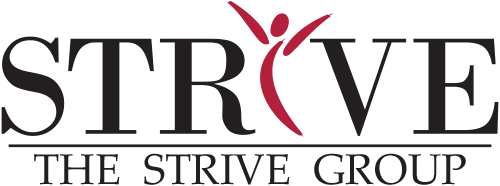
907.2.STRIVE


MAKING SIMPLE THE NEW NORMAL
THE CHARIOT GROUP:
![]() EXPERIENCED
EXPERIENCED ![]() KNOWLEDGEABLE
KNOWLEDGEABLE ![]() PROGRESSIVE
PROGRESSIVE
![]() EXPERIENCED
EXPERIENCED![]() KNOWLEDGEABLE
KNOWLEDGEABLE![]() PROGRESSIVE
PROGRESSIVE
Powerful, transparent technology that works.
OUR SERVICE MAINTENANCE AGREEMENTS INCLUDE:
![]() Preventative Maintenance
Preventative Maintenance![]() Both On-site & Remote Support
Both On-site & Remote Support![]() MySupportTM Web Portal
MySupportTM Web Portal![]() File Retention
File Retention![]() Training
Training![]() Equipment
Equipment
info@chariotgroup.com | 877.822.5300 | www.chariotgroup.com

Thanks for reading our Jul-Sept 2020 issue!




